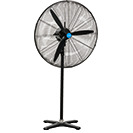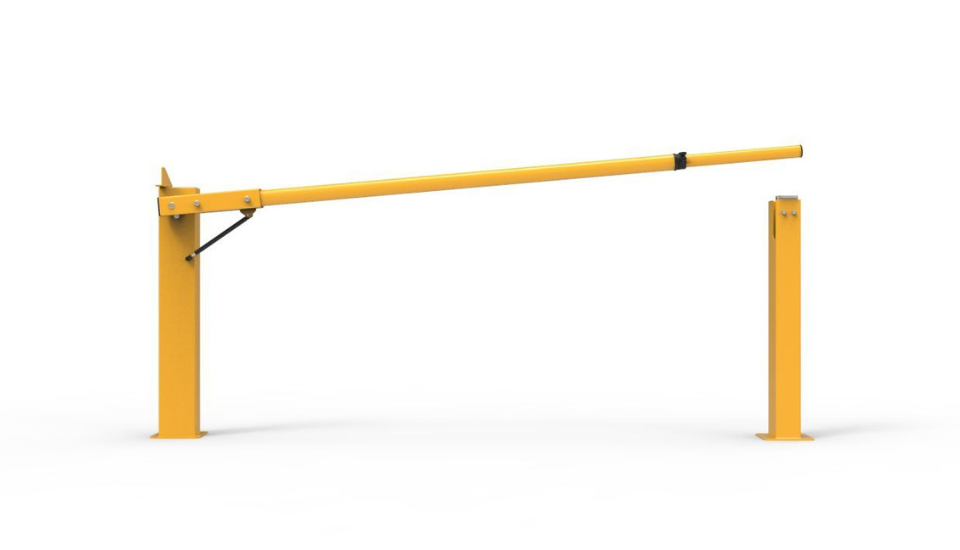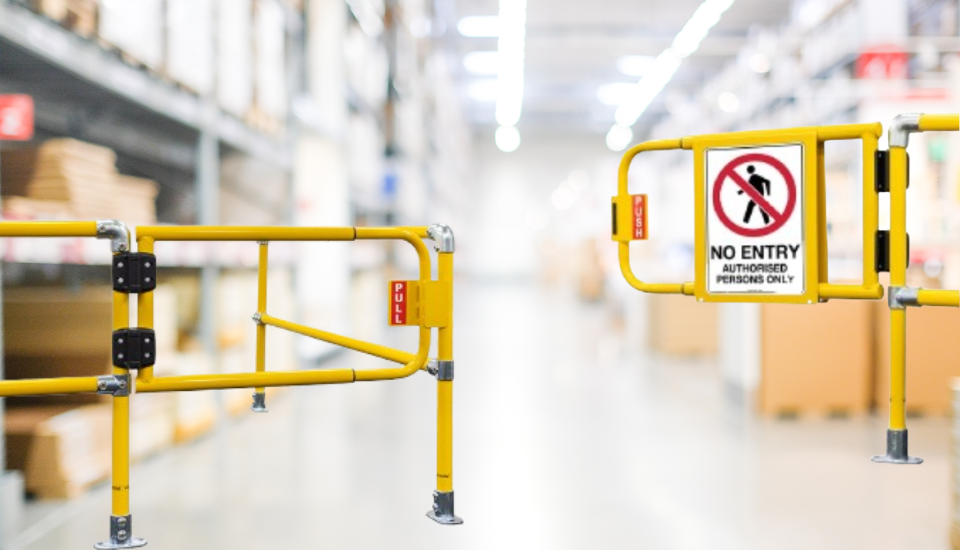6 Types of Gates Used in Australian Workplaces
Date Posted:3 July 2025
Learn about the key types of gates used on worksites and how to choose the right one for your space and safety needs.
Verdex Insights: At a Glance
-
The Challenge: Many Australian workplaces struggle to manage both safety and access control effectively. Without the right gates, sites face increased risks of collisions, unauthorised access, and inefficiencies in traffic movement.
-
The Insight: Gates form an essential part of a complete safety system, helping control the flow of people and vehicles, protect restricted areas, and maintain WHS compliance. The right gate (whether swing, boom, sliding, or cantilever) improves both safety and operational efficiency across diverse industries.
-
The Verdex Solution: Verdex supplies durable, WHS-compliant gates designed for warehouses, construction sites, manufacturing facilities, agricultural operations, and mining sites. Our range includes safety swing gates, telescopic boom gates, and pedestrian access systems, all engineered for reliability and seamless integration with barriers, bollards, and safety signage to create safer, more controlled environments.
Why Gates Are Essential in Australian Workplaces
Gates play a vital role in maintaining safety, security, and efficiency across a wide range of Australian workplaces. Whether managing vehicle access in warehouses or separating pedestrian walkways on construction sites, gates help regulate traffic flow and minimise the risk of incidents.
Gates form part of a broader safety strategy that includes barriers and bollards, helping businesses comply with Work Health and Safety (WHS) legislation and address Duty of Care obligations. In industrial settings, gates prevent unauthorised access to high-risk areas, while in logistics environments, they improve asset protection and streamline operations.
When paired with other safety infrastructure such as signage and hazard markings, gates offer a clear physical and visual guide to help staff and visitors navigate complex worksites safely and efficiently.
Common Types of Gates Used in the Workplace
1. Boom Gates
How they operate: Boom gates use a horizontal arm that raises and lowers to control vehicle access.
Typical use cases: Ideal for parking areas, loading docks, and commercial premises. They offer fast operation and can be integrated with ticketing, intercoms, or card systems.
Our Telescopic Boom Gates are a versatile option where space is limited or swing gates aren't practical. Adjustable in length, they're commonly used in loading docks and tight access points, offering reliable control and fall protection in compact environments.
2. Swing Gates
How they operate: Swing gates pivot on hinges, like a door.
Typical use cases: Suitable for both pedestrian and vehicle access points. They require clear swing space but offer simple, reliable access control.
At Verdex, we have two popular swing gate options, including our Safety Swing Gate, a self-closing gate ideal for restricting access to hazardous zones, complete with “Authorised Personnel Only” signage.
For greater flexibility, the Adjustable Safety Swing Gate suits a wider range of handrail systems and comes with interchangeable warning stickers, making it a strong choice for dynamic work environments with changing safety needs.
3. Sliding Gates
How they operate: These gates slide sideways on tracks or rollers.
Typical use cases: Perfect for areas with limited swing room, such as industrial sites or narrow driveways. Easy to automate and typically used for vehicular security.
4. Barrier Arm Gates
How they operate: Often mistaken for boom gates, barrier arms are lightweight and portable.
Typical use cases: Ideal for temporary access control or low-traffic areas like small loading zones. Easy to install and operate manually or via simple automation.
5. Pedestrian Safety Gates
How they operate: These gates restrict foot traffic in hazardous zones.
Typical use cases: Used around machinery areas or chokepoints in warehouses and assembly lines. They enhance WHS compliance by preventing unauthorised access to danger zones.
6. Cantilever Gates
How they operate: Supported by rollers on one side, these gate slides without ground contact.
Typical use cases: Suitable for large vehicle entrances and rough terrain where ground tracks are impractical. Robust and ideal for agricultural or mining sites.
How to Select the Right Gate for Your Workplace
Choosing the right gate starts with understanding your traffic flow. Is it mainly pedestrian, vehicle-based, or a combination of both? Boom and sliding gates are ideal for vehicle access, while pedestrian safety gates are better suited to walk-only areas.
Next, think about how frequently the gate will be used. In high-traffic zones, automated or power-assisted gates help reduce the strain of manual operation and improve efficiency.
Space is another key consideration. Swing gates require a clear pivot area to open and close, while sliding or cantilever gates are better for tighter spaces thanks to their lateral movement.
If integration with existing systems is important, look for gates that support automation features such as intercoms, RFID readers, or keypad entry systems.
Workplace health and safety can’t be overlooked. Make sure your gate complies with WHS standards, including features to prevent crushing, allow emergency exits, and provide clear visual alerts.
When handling machinery or hazardous materials, there should be complementary systems like PPE clothing and safety gear and workplace first aid kits nearby to protect workers in case of exposure or emergency.
For higher-security areas, pay attention to material durability, lockability, and perimeter protection features. And don't forget maintenance. Components like hinges, rollers, and tracks require routine checks and lubrication to stay in top condition.
Ultimately, at Verdex, we believe selecting the right gate means balancing access control, safety, available space, system integration, and long-term reliability.
Applications by Industry
Warehousing & Logistics
Sliding and boom gates are used to control vehicle access at loading docks and delivery entrances. Combined with barrier arms, they enforce operational zones and streamline truck movements.
Construction Sites
Portable barriers and swing gates help delineate temporary access areas, site entrances, or exclusion zones. Their flexibility allows for the frequent layout changes seen on construction sites.
Manufacturing
Swing and pedestrian safety gates are used to safeguard machinery zones, assembly areas, and controlled access points where foot traffic is frequent and separation is critical.
Agriculture
Cantilever gates serve rural environments, farm entryways, and equipment zones. Their trackless design is ideal for uneven terrain and heavy vehicle traffic, providing robust access control.
Mining
High-security perimeter systems, including sliding or cantilever gates with automated locks and fencing, control vehicle and personnel movement into high-risk zones and site access points.
Secure Your Site with the Right Gate Solution
At Verdex, we offer a wide range of gate systems built to meet the needs of Australian workplaces. Whether it's a compact pedestrian gate for internal zones or a robust sliding gate for controlling vehicle access. All our solutions are designed to meet WHS standards, ensuring both safety and compliance.
Our gates are built with durable steel or lightweight aluminium for easy installation, and optional automation kits make access control seamless. With nationwide delivery, expert advice, and ongoing after-sales support, Verdex is your partner in workplace safety and efficiency.
Need help choosing the right gate? Get in touch with our team today. We’ll help you find a solution tailored to your site, traffic, and safety needs. You can reach out to us by:
-
Emailing sales@verdex.com.au
-
Completing our contact form
Frequently Asked Questions
Are automatic gates suitable for industrial settings?
Yes. Automatic gates reduce manual handling, lower workplace injuries, and improve access flow in high traffic zones like dock doors and yard entrances. Ensure they are motorised to industrial grade, include safety sensors, and meet WHS entrapment standards.
Can gates be combined with safety barriers?
Absolutely. Combining gates with guardrails, bollards, and pedestrian barriers creates slotted access points that control movement and heighten safety. This integrated approach is common in warehouses, factories, and loading facilities.
What’s the difference between a boom gate and a barrier arm gate?
Boom gates are usually motorised, robust, and used for permanent installation. Barrier arm gates are lighter, manually operated, and ideal for temporary or low traffic use. Both control vehicle access but serve different usage scenarios.
Can Verdex help customise a gate solution?
Yes, Verdex specialises in tailored gate systems. Our team can assess your site, recommend the right gate type, and customise materials, automation, and installation to match your safety and access requirements.






















































































 Trolleys & Hand Trucks
Trolleys & Hand Trucks Cage Trolleys
Cage Trolleys Cleaning Carts & Trolleys
Cleaning Carts & Trolleys Construction Trolleys
Construction Trolleys Custom Trolleys
Custom Trolleys Hand Trucks & Dollies
Hand Trucks & Dollies Laundry/Linen Trolleys
Laundry/Linen Trolleys Lifting Trolleys
Lifting Trolleys Order Picking Trolleys
Order Picking Trolleys Panel Cart Trolleys
Panel Cart Trolleys Platform Trolleys
Platform Trolleys Powered Trolleys
Powered Trolleys Shelf & Tiered Trolleys
Shelf & Tiered Trolleys Shopping Trolleys
Shopping Trolleys Stainless Steel Trolleys
Stainless Steel Trolleys Tool Trolleys
Tool Trolleys Utility & Service Carts
Utility & Service Carts Lifting & Handling Equipment
Lifting & Handling Equipment Forklift Attachments
Forklift Attachments Jib Attachments
Jib Attachments Lifting Hoists & Pallet Hooks
Lifting Hoists & Pallet Hooks Load Skates & Tow Tugs
Load Skates & Tow Tugs Manual Stackers & Lifters
Manual Stackers & Lifters Pallet Jacks
Pallet Jacks Pallet Lifters
Pallet Lifters Pallet Rotators & Dispenser
Pallet Rotators & Dispenser Powered Pallet Trucks & Electric Lifters
Powered Pallet Trucks & Electric Lifters Scissor Lift Trolleys and Tables
Scissor Lift Trolleys and Tables Conveyor Equipment
Conveyor Equipment Conveyor Frames & Stands
Conveyor Frames & Stands Roller & Skate Conveyors
Roller & Skate Conveyors Ladders & Access Equipment
Ladders & Access Equipment Container & Yard Ramps
Container & Yard Ramps Ladders & Step Stools
Ladders & Step Stools Work Platforms & Crane Cages
Work Platforms & Crane Cages Drum Handling Equipment
Drum Handling Equipment Drum Storage & Bunding
Drum Storage & Bunding Drum Trolleys & Lifters
Drum Trolleys & Lifters Forklift Drum Handling
Forklift Drum Handling Waste Handling & Bins
Waste Handling & Bins Bin Lifters & Tippers
Bin Lifters & Tippers Plastic Waste & Wheelie Bins
Plastic Waste & Wheelie Bins Steel Waste & Tipping Bins
Steel Waste & Tipping Bins Waste Carts
Waste Carts Dangerous Goods Storage & Spillage
Dangerous Goods Storage & Spillage Aerosol Cans Storage Cages
Aerosol Cans Storage Cages Bunded Pallets & Storage
Bunded Pallets & Storage Corrosive Goods Storage Cabinets
Corrosive Goods Storage Cabinets DG Storage & Trolleys
DG Storage & Trolleys Flammable Liquid Cabinets
Flammable Liquid Cabinets Forklift Gas Storage Cages
Forklift Gas Storage Cages Site Storage
Site Storage Spill Kits
Spill Kits Shelving & Storage Equipment
Shelving & Storage Equipment Stillage & Transport Cages
Stillage & Transport Cages 750 Series Cage Configurations
750 Series Cage Configurations Heavy Duty Cabinets
Heavy Duty Cabinets Heavy Duty Shelving
Heavy Duty Shelving Mega Bins & Pallets
Mega Bins & Pallets Packing & Workbenches
Packing & Workbenches Parts Trays & Stor-Pak Bins
Parts Trays & Stor-Pak Bins Pegboard & Louvre Panels
Pegboard & Louvre Panels Plastic Bins & Crates
Plastic Bins & Crates Plastic Handling Solutions Bins
Plastic Handling Solutions Bins Plastic Pallets
Plastic Pallets Stack & Nest Bins
Stack & Nest Bins Pallet Racking Accessories
Pallet Racking Accessories Workplace Equipment
Workplace Equipment Modular Workbenches
Modular Workbenches Electric Height-Adjustable Workbenches
Electric Height-Adjustable Workbenches Floor Matting
Floor Matting General Workplace Equipment
General Workplace Equipment Industrial Weighing Scales
Industrial Weighing Scales Packaging Machinery
Packaging Machinery Stationery Cupboards
Stationery Cupboards Storage and Stillage Cages
Storage and Stillage Cages Tool Trolleys
Tool Trolleys Tooling Cabinets
Tooling Cabinets Workshop Fans and Coolers
Workshop Fans and Coolers Safety Barriers, PPE & Signage
Safety Barriers, PPE & Signage Barriers & Bollards
Barriers & Bollards First Aid Equipment
First Aid Equipment Gloves, Knives and PPE
Gloves, Knives and PPE Signage
Signage Cleaning & Site Supplies
Cleaning & Site Supplies Cleaning Equipment
Cleaning Equipment Cleaning Trolleys
Cleaning Trolleys Rubbish Bins
Rubbish Bins Signs & Traffic Supplies
Signs & Traffic Supplies Construction Equipment
Construction Equipment Construction Trolleys
Construction Trolleys Waste Handling
Waste Handling General Site Equipment
General Site Equipment Concrete Equipment
Concrete Equipment Site Storage
Site Storage Lifting Equipment
Lifting Equipment











